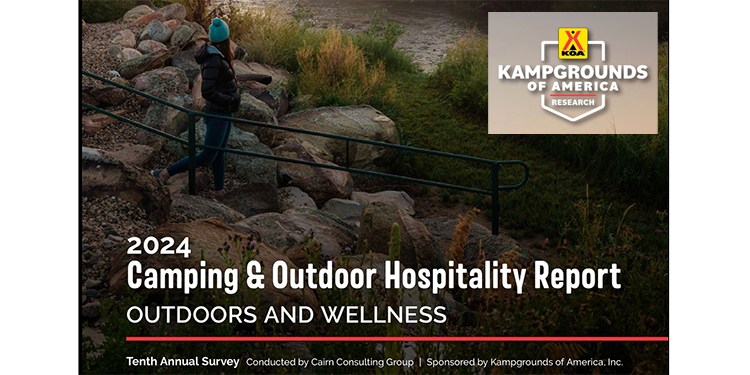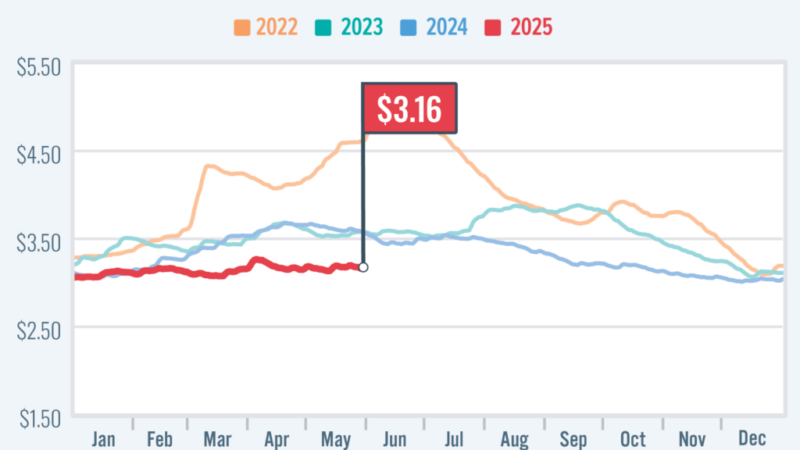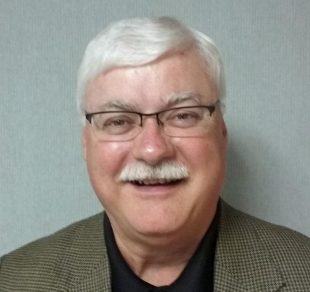KOA: Campers Prioritize Relationships, Personal Well-Being – RVBusiness – Breaking RV Industry News

BILLINGS, Mont. – Kampgrounds of America, Inc. (KOA) today released its inaugural Outdoors & Wellness report as part of the annual Camping and Outdoor Hospitality Report series. Since the inception of KOA’s annual camping research, campers have reported that physical and mental wellness benefits are the driving force behind their continued participation in the outdoors. This report provides a nuanced perspective into wellness and how it translates to the camping and travel industry.
Relationships, Wellness & Camping
- Spending time in the outdoors encourages healthy interactions and activities, providing holistic benefits such as a relaxed state of mind, strengthened relationships and enhanced physical well-being.
- At the most basic level, 69% of campers say camping contributes to their emotional well-being, with Gen X (76%) showing a higher preference for finding emotional respite in the outdoors compared to millennials and Gen Z (66%).
- Campers want to focus on what makes them happy, emphasizing spending time with loved ones and slowing down to enjoy the moment, with nearly two thirds of campers agreeing that doing so improves interpersonal relationships.
- 65% of campers say a digital detox is “very appealing” and would align with their travel goals of slowing down and recharging.
“The outdoors allow people to de-stress, feel relaxed, become more grounded and better connect to nature and the people they cherish,” said KOA President and CEO, Toby O’Rourke. “Wellness means more than self-care; it’s being in the moment, seeking out activities that bring joy and simply connecting to nature.”
Defining Wellness Today
- One out of every six campers are considering a wellness experience in 2024. Those most interested in including wellness in their trips are likely to gravitate toward experiences such as forest bathing (83%) and water-based activities (70%).
- 94% of campers plan to include some type of wellness activity during their trips.
- Campers are seeking activities and experiences that contribute to emotional and physical well-being while connecting with loved ones. Notably, 85% of campers who report camping helps strengthen their relationships and bonds with family also say camping contributes to their emotional well-being.
The Future of Wellness Travel
- The near future for wellness suggests a desire to connect more personally with oneself, loved ones and the natural world, with campers gravitating towards immersive experiences instead of group classes or organized retreats.
- Campers are placing increasing importance on camping elements that resonate with the body and soul, fostering deeper connections with the world and people around them.
- Campers today wish for fewer distractions, less time spent organizing, more spontaneity and simpler experiences, aiming to cut back on bothersome or inconvenient activities to maximize time with loved ones and enhance emotional and physical wellness.
To view the full 2024 Outdoors & Wellness Report, visit http://koa.uberflip.com/i/1523654-2024-koa-c-oh-report-outdoor-and-wellness-report/0. Additional supplemental reports will be released in the coming weeks, exploring several topics more in-depth, available at KOAPressroom.com.
SURVEY METHODOLOGY
The results of the most recent iteration of the North American Camping and Outdoor Hospitality Report are based on a total of 4,100 surveys completed among a random sample of U.S. (n=2,900) and Canadian (n=1,200) households. Within the U.S. sample of households, results are stratified by Census Region: Northeast (n=725), Midwest (n=725), South (n=725) and West (n=725). Overall, a sample of n=2,900 U.S. households is associated with a margin of error of +/- 1.82 percentage points, while a sample of n=1,200 Canadian households is associated with a margin of error of 2.83 percentage points. All surveys were completed only via an outbound solicitation sent to a randomly selected cross-section of U.S. and Canadian households. In order to calculate overall incidence, the sample of respondents was statistically balanced to ensure that the results are in line with overall population figures for age, gender and ethnicity. Some results may not add to 100 percent due to rounding.







